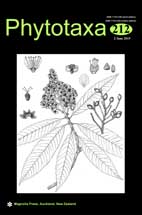Abstract
Curvularia is an important genus whose species are widely distributed phytopathogens as well as opportunistic pathogens on human and animals. The purpose of this study is to re-evaluate the phylogenetic relationships of the species in the genus Curvularia using ITS (nuclear ribosomal internal transcribed spacer), GPDH (glyceraldehyde-3-phosphate dehydrogenase) and TEF (translation elongation factor) gene regions and to provide modern descriptions and illustrations of Curvularia australis, Curvularia buchloës, C. cymbopogonis, C. hawaiiensis, C. neoindica, C. neergaardii, C. nicotiae, C. nodulosa, C. ryleyi, and C. subpapendorfii which lack recent descriptions with details of host and distribution. A multi-gene phylogenetic tree based on ITS, GPDH and TEF gene regions is used to define species of a fresh collections obtained from various hosts and geographic locations in the world. Both human and plant associated species of Curvularia are included in the phylogenetic analysis. Some species that have previously been described from humans are herein reported from plant material as pathogens or saprobes and vice versa. Novel host associations are reported for C. asianensis, C. borreriae, C. hominis, C. muehlenbeckiae, C. trifolii and C. verruculosa.

